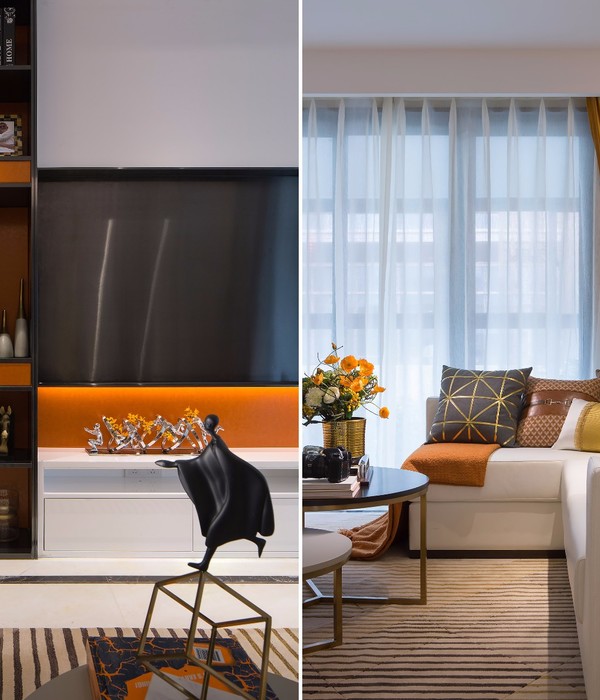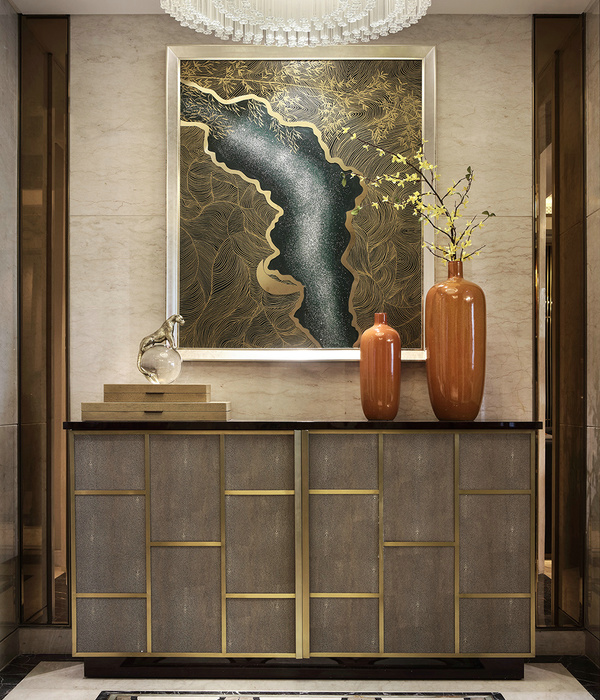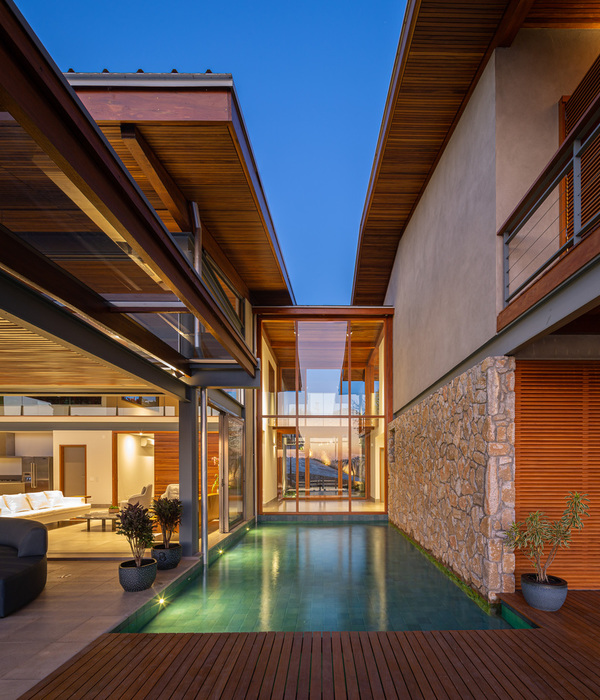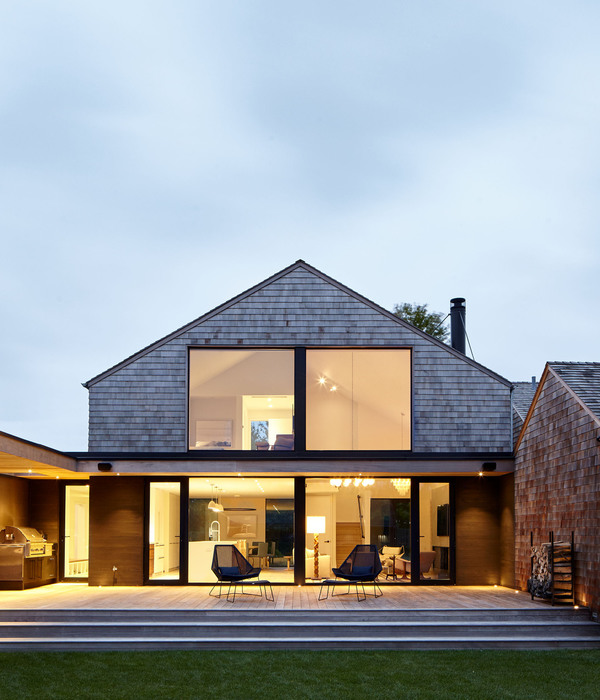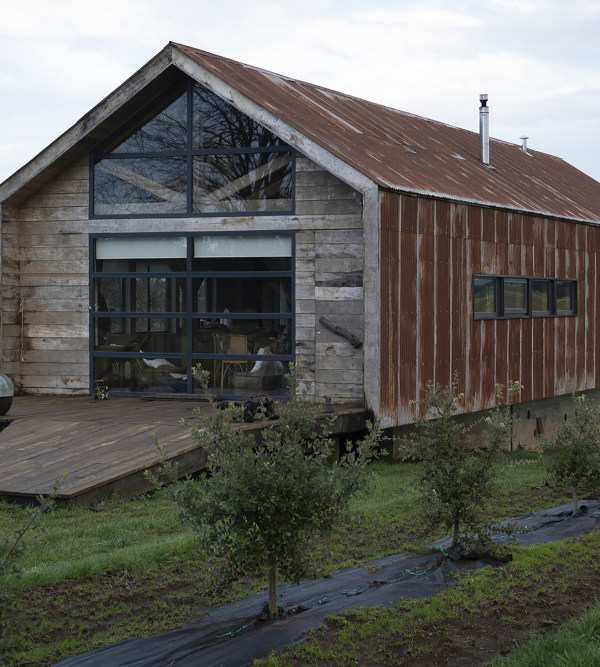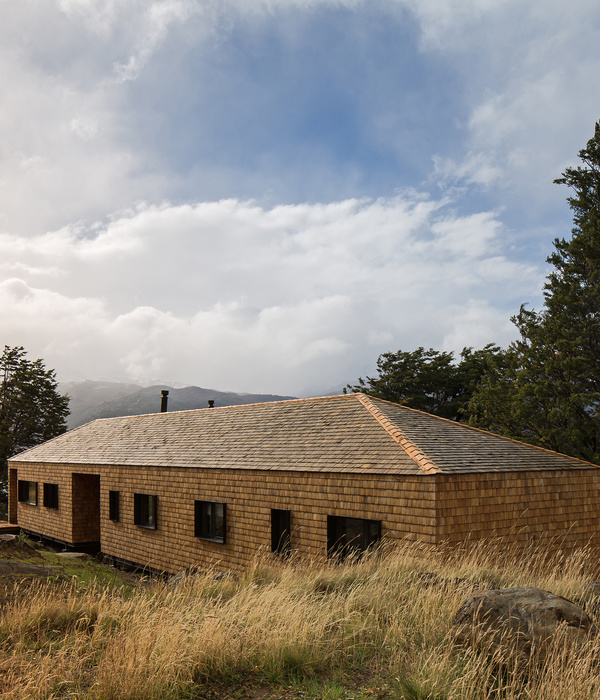Firm: Beautbureau
Type: Commercial › Office Residential › Private House
STATUS: Built
YEAR: 2020
SIZE: 5000 sqft - 10,000 sqft
BUDGET: Undisclosed
Photos: SPACESHIFT STUDIO (49)
#11 II
/Number Eleven the Second/
The first House #11 was the childhood home of the architect-owner of #11 II. The modest two-bedroom, two-storied detached house with a two-car garage housed the family of five, which later moved out due to the need for more space. The structure was then demolished, and the property emptied, for nearly two decades. One of the siblings has recently returned to the neighborhood to re-build on the old family lot.
The architect superimposed #11 II –a new three-bedroom, two-storied house—on top of the approximate L-shaped footprint of the first. Over the old lawn where mango trees grew, at the southwest corner of the lot, now sits an addition –a double-storied building that houses the architect’s office. Connecting the residence and the office with outdoor terraces on both levels, in effect, makes an architectural compound of nine quarters demarcated by four lines (#) —a nod to the classic nine-square-grid pedagogical instrument.
On the small plot of 480 sqm, the additional programs necessitate minimizing perimeter setback on all sides, which results in the spatial configuration that internalizes gardens and open spaces. Two green courtyards occupy two of the nine quarters, while the center is left entirely open to the sky.
Bedroom and office pavilions on the upper level are high-ceilinged, arranged in separate corners, and enveloped in black latticed facades. Open terrace, verandah and walkway connect the pavilions. The spatial characteristics resemble that of the traditional Thai house (Ruen Thai), in which individual pavilions –bedrooms (Ruen Non), living + dining area (Hor Nang), kitchen (Ruen Krua) — are clustered around an open terrace (Charn) on an elevated platform. The ground floor of the office building is multipurpose and airy, with ample openings and sliding partitions, mimicking the versatile ground floor space underneath the platform (Tai Thun) of the vernacular Ruen Thai.
The black latticed facades are prefabricated panels made of wood plastic composite. While their (pre)fabrication method references that of patterned wood panels (Fa Pakon) that constitute Ruen Thai’s walls, the pattern is abstracted, the color desaturated & intensified, and the aesthetics contemporized. Wrapped over both the solid walls and the voids, the black skin unifies the entire upper level, forming an elevated cluster of seemingly monolithic masses that hovers over the monochromatic white components of the ground floor.
Nostalgia plays a significant role in the rest of the material palette. New materials —most prominently the facades’ and exterior decks’ wood plastic composite—are deliberately countered with the old set of materials from the first House #11: terrazzo, local Thai marble, wooden doors and windows, textured cement render, weathered brass hardware and fittings. Memories of the old are preserved within the materiality of the new.
{{item.text_origin}}



